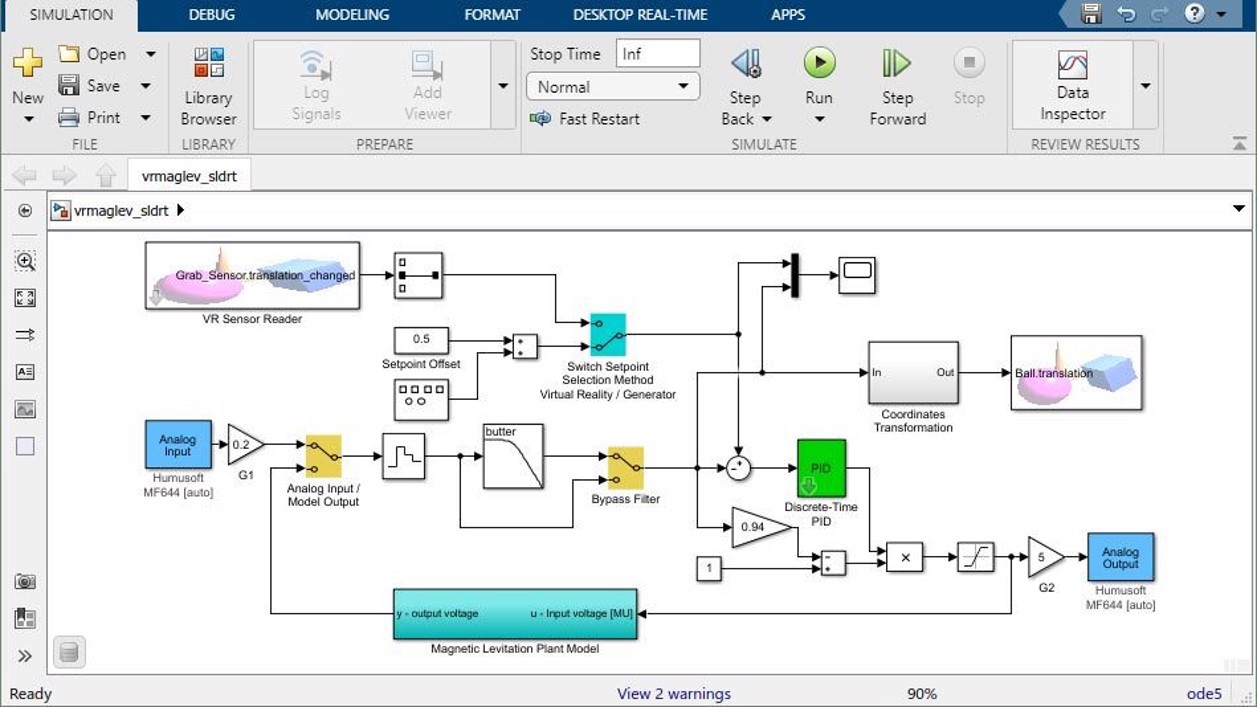Matlab Simulink
Description
Simulink, a software tool developed by MathWorks, provides a block diagram environment that facilitates multidomain simulation and Model-Based Design. The software facilitates the process of system-level design, simulation, automatic code generation, and continuous test and verification of embedded systems. Simulink offers a graphical editor, customisable block libraries, and solvers that facilitate the modeling and simulation of dynamic systems. The software is seamlessly linked with MATLAB®, allowing users to seamlessly integrate MATLAB algorithms into their models and export simulation results to MATLAB for subsequent analysis.
The Simulink Verification and Validation tool facilitates a methodical approach to verifying and validating models by incorporating features such as modeling style checking, requirements traceability, and model coverage analysis. Simulink Design Verifier employs formal approaches to detect design flaws such as integer overflow, division by zero, and dead logic. Additionally, it provides test case scenarios for model verification within the Simulink environment.
One of the primary features encompasses a visual editor that facilitates the modeling of various elements inside a system.

Gallery

Classifications
Scale of implementation
Matlab Simulink has a global customer base that covers leading businesses, organizations and academic institutes worldwide.
Type
MATLAB Simulink is a powerful graphical programming environment and simulation tool developed by MathWorks.
Phase of solution
The top-level system layout of a Simulink model is a common context that many engineering teams can use and is the basis for many tasks in the Model-Based Design paradigm: analysis, design, test, and implementation.
Target audience
Matlab Simulink environment provides solutions especially for engineers and is utilized by academics, businesses and organizations too.
Key features-functionality
Matlab Simulink offers plenty of key features, such as:
- Using a graphical user interface, Simulink enables the creation of block diagram models of dynamic systems. You construct your system by connecting blocks that represent various elements and components. Among other things, each block may represent a mathematical operation, a physical component, a signal source, or a sensor.
- Simulation: Simulink's sophisticated simulation engine enables you to simulate the behavior of your system over time. To perform simulations and evaluate the system's response, you can specify input signals, initial conditions, and other parameters.
- Model-Based Design: It supports a model-based design approach, allowing you to design, prototype, and test control systems and algorithms in a virtual environment prior to implementing hardware.
- Code Generation: Simulink can autonomously generate code from your models, facilitating deployment of your designs on embedded systems, real-time targets, and hardware-in-the-loop (HIL) configurations.
- Extensive Block Library: It includes a comprehensive library of predefined blocks, including math functions, signal processing tools, control system blocks, and more. Users can also create their own elements and libraries to expand its functionality.
- Real-Time Simulation: Simulink supports real-time simulation for testing and validating hardware. Connecting your model to external hardware and interacting with it in real-time is possible.
- Signal Processing: Simulink is frequently utilized for signal processing applications such as filtering, data analysis, and communication system modeling.
- Automatic Parameter Tuning: It provides instruments for automatic parameter tuning and optimization of system models, making it simpler to fine-tune designs.
- Integration with MATLAB: Simulink is tightly integrated with MATLAB, allowing you to utilize MATLAB's scripting and mathematical capabilities within Simulink models.
- Simulink is utilized in numerous industries, including aerospace, automotive, robotics, telecommunications, and industrial automation, to design and simulate sophisticated control algorithms and systems.
References & Sources for Further Reading
- Official website of Matlab: Electrification - MATLAB & Simulink (mathworks.com)
- Simulink Getting started guide
